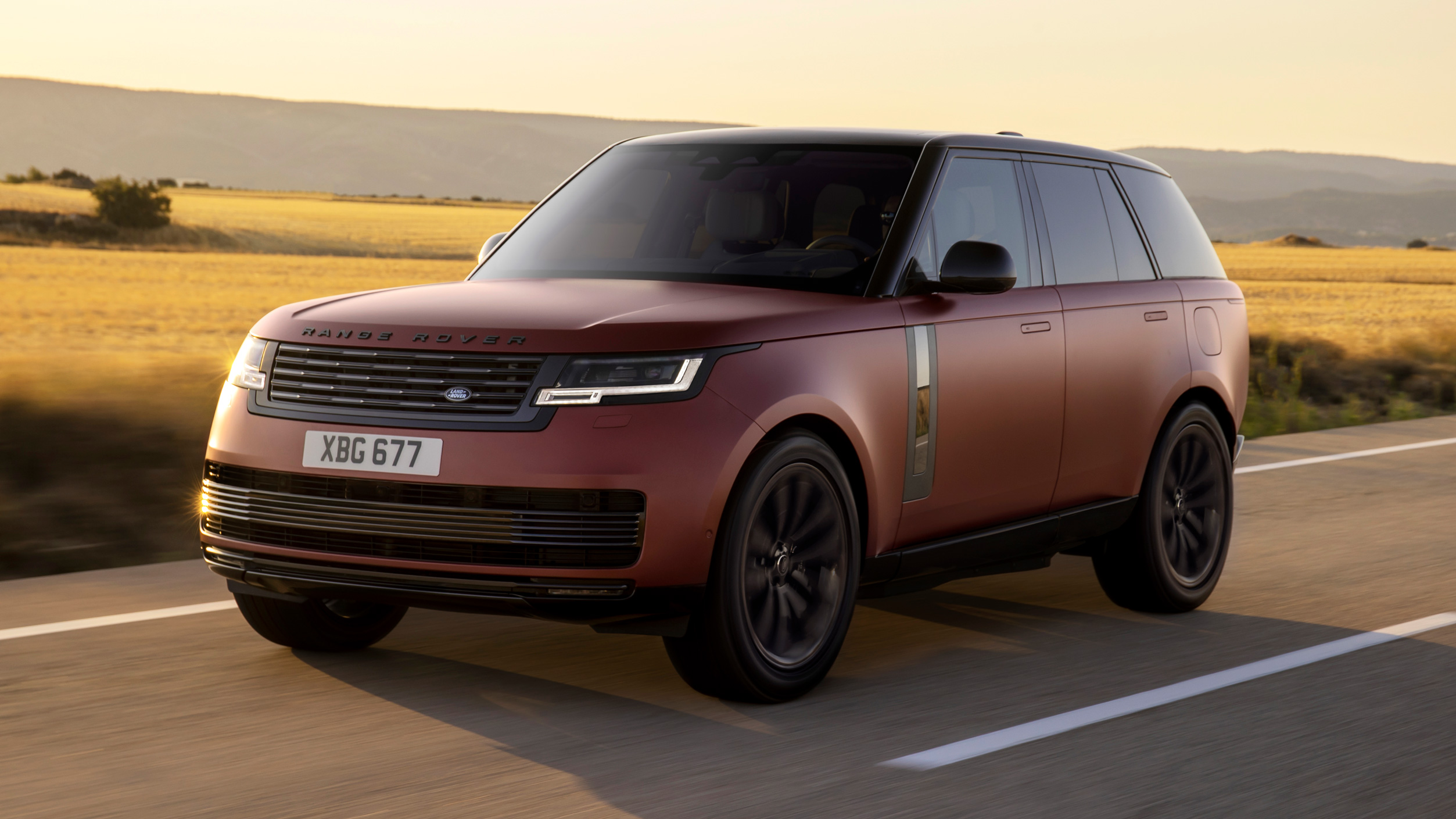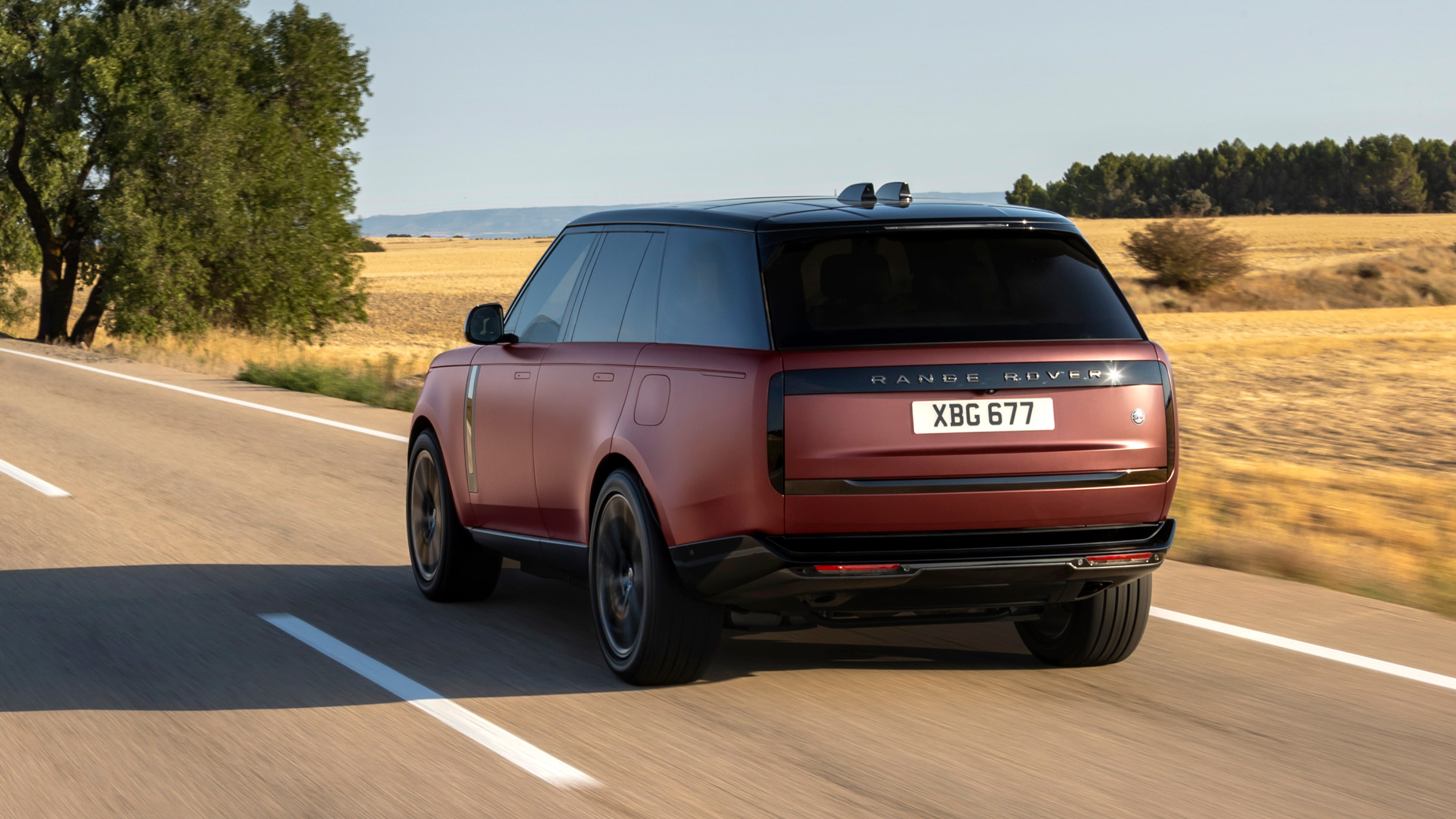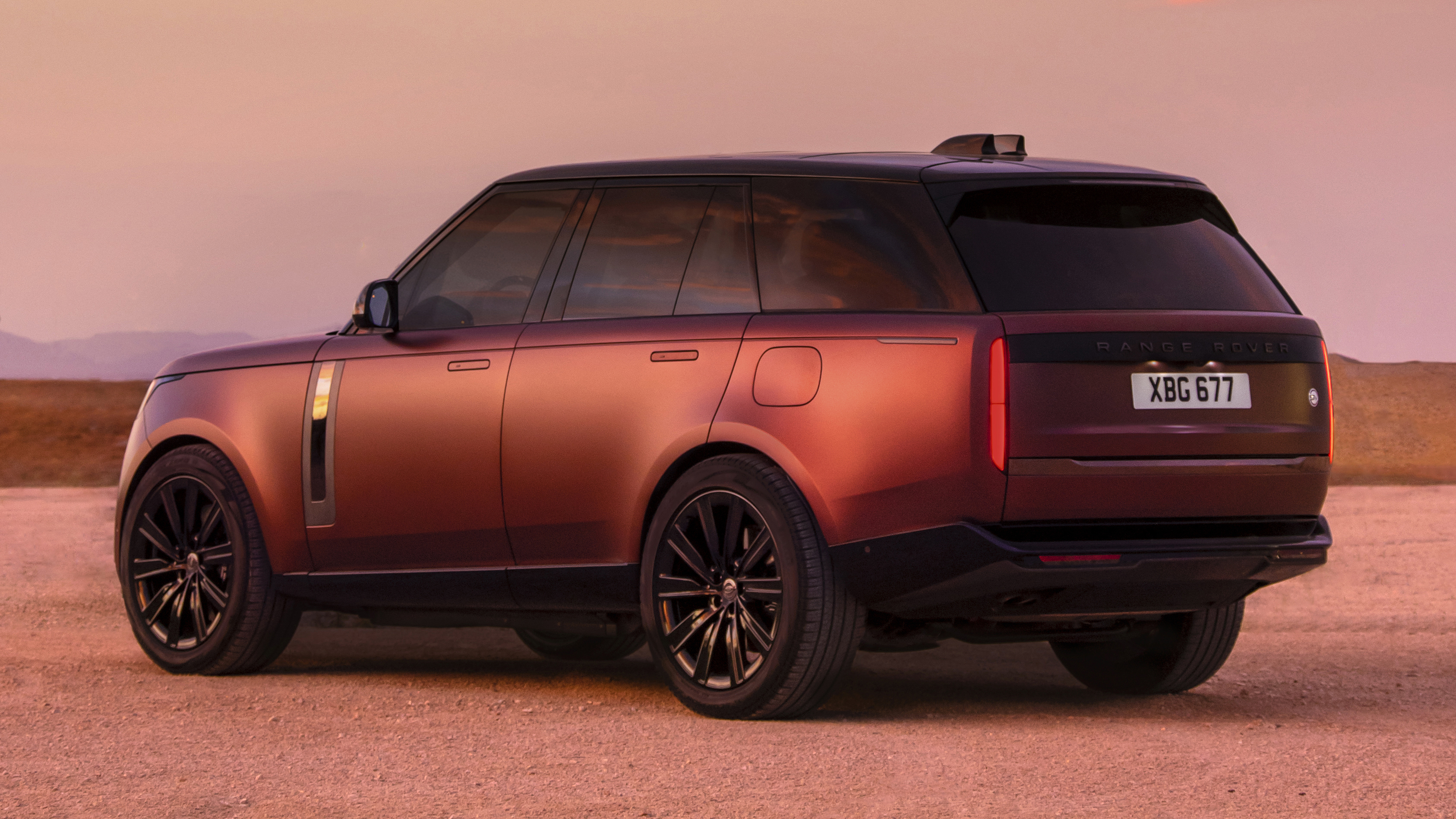
Range Rover P510e review: plug-in hybrid might be the best new Rangey
£126,400 when new
SPEC HIGHLIGHTS
- Battery
Capacity38.2kWh
- BHP
510bhp
- 0-62
5.5s
- Max Speed
150Mph
What am I looking at here?
It’s the new, fifth-generation Range Rover. Something we’ve already driven at reasonable length in petrol and diesel forms, but which is now available as a plug-in hybrid.
Two plug-in hybrids, in fact, for you’ve a pair of options on the configurator. At a whisker over £108,000, the P440e is nine grand more than a base diesel but is nearly a second quicker to 62mph, while its claimed 19g/km of CO2 emissions and 334.5mpg shadow the D300’s 202g/km and 36.6mpg considerably – however daydreamy the PHEV’s economy numbers may seem in reality.
The P510e, meanwhile, claims 5.5 seconds to 62mph, 20g/km and 321.7mpg with a starting price of £131,355 owing to it coming only in fancier Autobiography or SV trims, bringing bigger wheels and plusher, more adjustable seats as well as digital LED lights, a camera-based digital rear-view mirror and a head-up display.
Is there going to be a full EV?
It arrives in 2024. In the meantime, these two PHEVs are where to find desirable tax breaks. Land Rover reckons 75 per cent of its customers’ journeys will fit into the circa 50 miles of real-world range you’ll get in zero-emission EV mode (70 miles is the official claim).
The 38.2kWh battery will charge in around an hour on a 50kW DC charger, or five hours if you plug it into a 7kW home wall box. If you’re spending six figures on a brand-new Rangey – and you’re pally enough with the dealer to have got your order in early to beat the queues – then you’ll probably not be unduly vexed about what this does to your energy bills.
What’s the engine?
Under that signature clamshell bonnet is a 3.0-litre straight-six petrol paired with a 105kW electric motor for four-wheel drive and peaks of either 434 or 503bhp depending on whether you go for the P440e or P510e. The former is, on paper, the pick of the Range Rover family right now. In the smaller Range Rover Sport, where it costs £84k (not cheap, but relatively so among its siblings), it’s even more appealing.
But the Range Rover leans into excess like few other cars, so naturally our first go is in the more powerful version. Here it’s optioned up to the hilt, a trip via Land Rover’s Special Vehicles department and a few tins of satin-finish ‘Sunrise Copper’ paint swelling the total to £168,045. Gulp.
Will hybrid thriftiness really matter to anyone with £168k spare?
Perhaps not, but futureproofing your luxury wheels to get you into zero-emission inner-city zones probably makes a good deal of sense. Walking the last mile to a crucial meeting perhaps isn’t the best of looks. Then there’s the benefits electrification brings the driving experience.
Range Rovers have always majored on soothing luxury rather than such uncouth phenomena as ‘handling’, so mooching around in EV mode feels like a very natural step for this car to have made. Few cars make the transformation into electrification feel as natural – and perhaps inevitable – as this. Though you’ll have to keep a watchful eye on pedestrians blithely strolling out in front of its big, bluff nose as you creep quietly though towns.
I’m sure it handles a *bit*, though?
Try to attack a corner in this like it’s a performance SUV – which its 500bhp-plus output and hot hatch acceleration figures might reasonably encourage – and it’ll politely tick you off with tyre squeal and a gentle scrub wide. It’s a ‘slow in, slightly faster out’ style you need to apply here. A standard four-wheel-steering system helps tuck you round tight corners in town (or off road), but its talents stop short of full witchcraft.
Top Gear
Newsletter
Thank you for subscribing to our newsletter. Look out for your regular round-up of news, reviews and offers in your inbox.
Get all the latest news, reviews and exclusives, direct to your inbox.
After all, the P510e weighs ‘from 2,810kg unladen’, which can be construed as roughly three tonnes with a tank of fuel and a driver – and notably more once you start loading the thing up. You do wonder just how long we’ve got before luxury SUVs packed with battery cells are pushing the 3.5-tonne limit of a regular UK driving licence. We’ve already seen the Hummer EV hit a stonking four tonnes.
Nevertheless, acceleration can be very strong indeed, though the car – and your passengers – will favour a calmer demeanour, the engine kicking in smoothly and subtly when needed. It sounds good, too; noise-cancelling tech helps ensure it’s largely muted, but despite being two cylinders short of what you might consider Range Rover tradition, its occasional contributions are far from unwelcome. Needless to say refinement is strong and the ride quality imperious, even rolling on 23s.
How else does it earn its price tag?
Well, you’re certainly getting a lot of metal for your money. The materials inside are a step up on from before, too, with the option of leather-free fabrics to help chip further away at your iceberg of environmental guilt. Something called Cabin Air Purification Pro does what it says on the spec sheet, cleaning the air that wafts through the vents, even reducing any molecules of Covid trying to make their way into the car.
Short- and long-wheelbase versions are available, the latter optionally with two individual rear seats separated by a ‘club table’ that deploys itself in a fabulous manner. Going for one of SV’s interior themes trims the back seats in a different shade to the fronts, too. Y’know, for when you want to really visually separate yourself from your driving staff.
So what’s the verdict?
The fact three-quarters of Range Rover owners’ journeys can apparently be catered for by a sliver of electric range suggests they could easily make do with a smaller, lighter mode of transport better in keeping with the current climate rhetoric. But if they absolutely must drive something so big and plush, aren’t we all better off that it whispers past our homes and schools with zero local emissions? The fact those on board get to experience an ever calmer, smoother mode of transport seems a mere side note. The heaviest Range Rover yet also manages to justify its existence most easily. Funny old world.
Featured

Trending this week
- Car Review
BMW iX3






